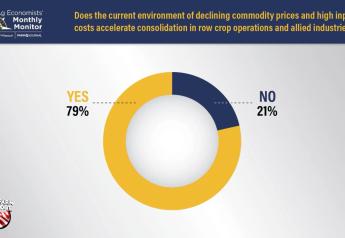Tips To Keep Your Agribusiness Team Happy

To show your agribusiness team you care, keep open lines of communication and provide incentives for a job well done. Those are among the strategies farmer-owned cooperative Heritage FS of Gilman, Ill., uses to serve its employees, says Bill Romshek, marketing manager.
The cooperative has 135 full-time employees and hires between 65 and 70 seasonal workers.
“Our philosophy at Heritage as a culture is to keep employees all involved, to empower employees,” Romshek tells “Top Producer Podcast” host Pam Fretwell in an episode airing this summer. “They all want to be in the know. They want to be treated as if they’re part of the operation, part of the business.”
In the past, the company probably placed the most emphasis on working with its sales force, Romshek says. Today, though, times have changed in the industry. Every employee is valuable, he says, including secretaries and people operating equipment in the field.
“One time a year, we have Employee Appreciation and we take them out for the weekend,” Romshek explains. “We put them up in a hotel and [provide] meals and entertainment. We show them how much we appreciate what they do for us throughout the year.”
Increasingly, the cooperative hires young professionals whose perspectives on career and family can differ from those of older generations.
“In the younger generation, the spouses work also,” Romshek says. “It’s hard for employees to be gone weekends and holidays as well as then to be away from the spouse. The ag industry is very seasonal, and Mother Nature’s the boss. We work when we have to. We may not want to work on weekends, but if it’s dry and time to go to the field, we work when the weather permits.”
To compensate employees for their investment of time and hard work, the company offers generous benefits such as cooperative-wide and discretionary bonus programs and scheduling flexibility.
“One thing that’s helped is that farmers are putting the crop in the field so much faster today than they have in the past,” Romshek explains. “We used to joke that we’d work 30 days straight because that’s when farmers are running the field. Well, you get a week to 10 days [today and] the corn crop can be in the ground. That helps. The hours aren’t nearly as long as they were in the past. … We try to have flex hours with the guys. If they have to work on weekends, we tend to be flexible in the hours when it comes to during the week.”
The cooperative recently hired a human resources manager to help with team management, and its leaders aim to create career paths for employees.
“A lot of people are looking for advancement and opportunity to grow. You try to keep that in mind when you’re looking at growth opportunities within the company,” Romshek says. “That’s one thing we look at. Any job we have open, we post it internally first, post it so every current employee has the opportunity to grow within the company.”







